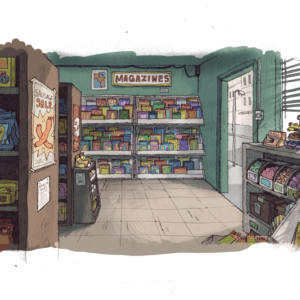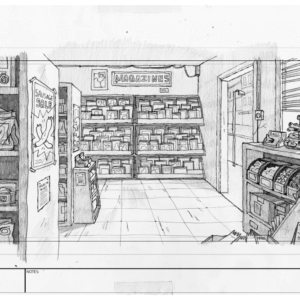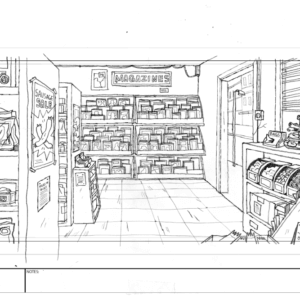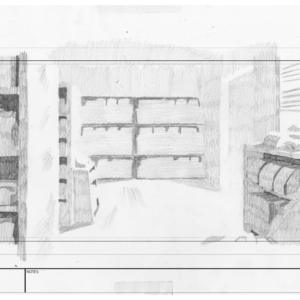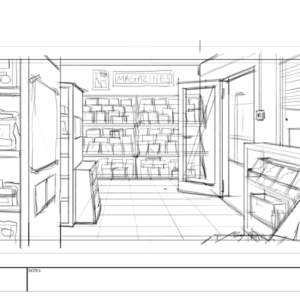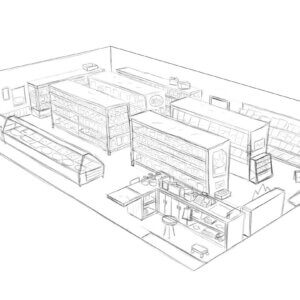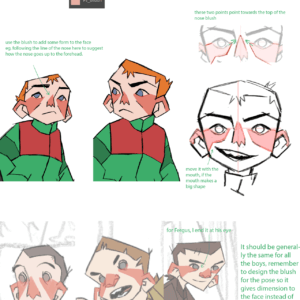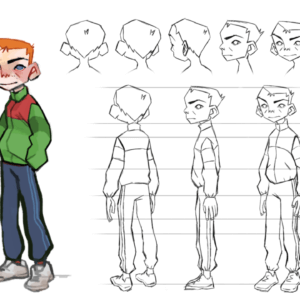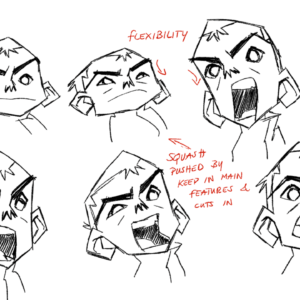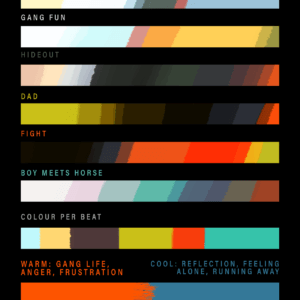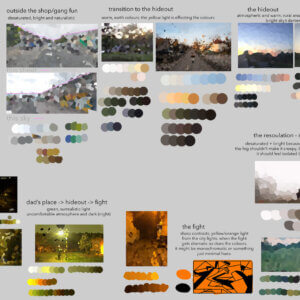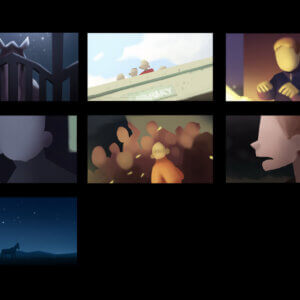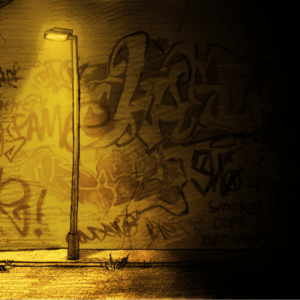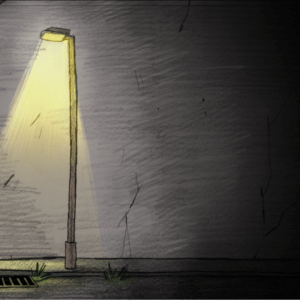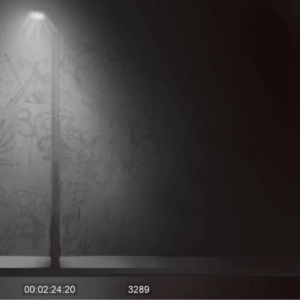Interview with ‘Shergar’ director Cora McKenna
Running through the back streets of Dublin, Conner and his gang of renegade mates stir up trouble and get into scrapes attempting to escape from their troubled home lives; simultaneously a legendary creature is escaping its own fate. When Connor gets in over his head, he flees into the nearest open space to catch his breath. The two wild things meet and share a moment before returning to their individual worlds.
Cora McKenna‘s Shergar is a brash, grungy look into inner-city living and the mystery surrounding the notorious disappearance of the beloved racing horse Shergar in the late ’80s. The director herself hails from a small village outside Kilkenny, a stone’s throw from the famous Irish animation studio Cartoon Saloon. After visiting the studio when she was still in school, Cora set her sights on studying animation. On the studio’s recommendation she attended the equally well-known animation school The Animation Workshop in Viborg, Denmark. It would seem that, while you can take the animator out of Ireland, you can’t take Ireland out of the animator, as her graduate film serves as a testament to. Skwigly were delighted to get some time with Cora to discuss her film in detail and gain insight into the culture of horse fanciers in the unlikely urban landscape of inner-city Dublin.
Can you start by telling me a little bit about your background and how you came to work in animation?
I’m from a small town in Kilkenny in Ireland, called Castlecomer. It’s near Kilkenny city, which is where Cartoon Saloon is. As I kind of grew up around there, I visited the studio and made friends with them, and they really inspired me. I’d go in there and because I could draw, they would be like “Oh my god, this is a kid from here that can draw!” So they really like inspired me to go and study, they told me the good places to study and where to go. I ended up working there after school and I’m still around there now.
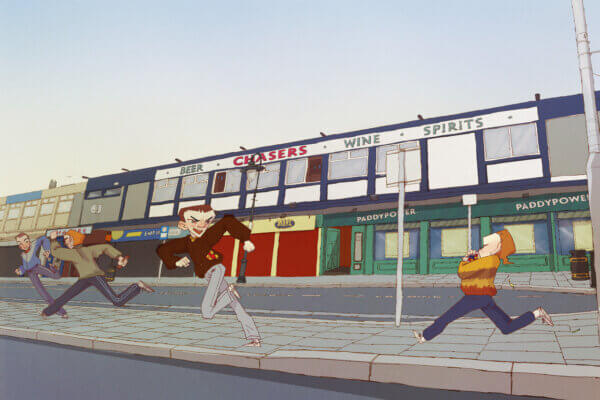
What was it like, working there?
It was really nice. It was funny because I studied in Denmark. So I studied outside of Ireland and then I came back to work in Cartoon Saloon. So I went away and then coming home to work felt very strange. I’m really happy to live near such an amazing studio. I don’t think many people get the opportunity to have such a nice place to work so close to home.
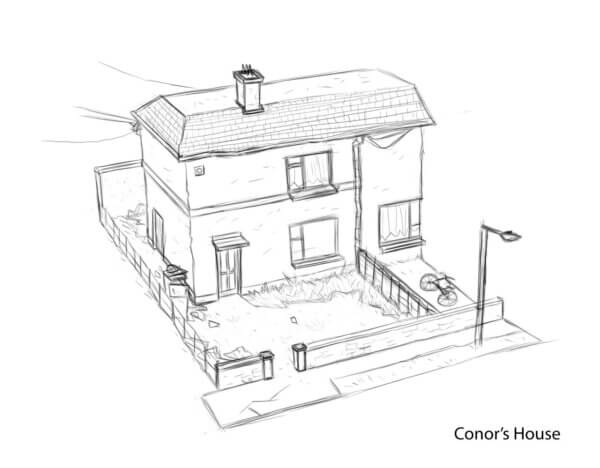
What inspired the story of Shergar?
A couple of things, obviously Shergar the horse, which was a real horse that was kidnapped in the 80s. So that’s where that story originated, because I thought it’s a bit of a mystery. What happened to Shergar? No one knows. The story is that he was shot but no one ever found the horse or who really did it. So I thought it would be a cool story if a kid ended up finding the horse.
I spent some time studying in Dublin. I spent a year studying animation straight after secondary school, in Ballyfermot in Dublin, which is where the film was set. It’s a pretty rough area of Dublin and Dublin (and Ireland in general) has this weird relationship with working-class horses and horses being around cities even now, especially in the travelling community. So, it’s really common to just see horses around in cities. I think it’s a really cool part of our culture. I think a lot of that culture is also fighting to keep horses around. So, you know, on the bus to college, I would maybe see a kid riding down the street on a horse in midday traffic. It’s totally badass and very weird.
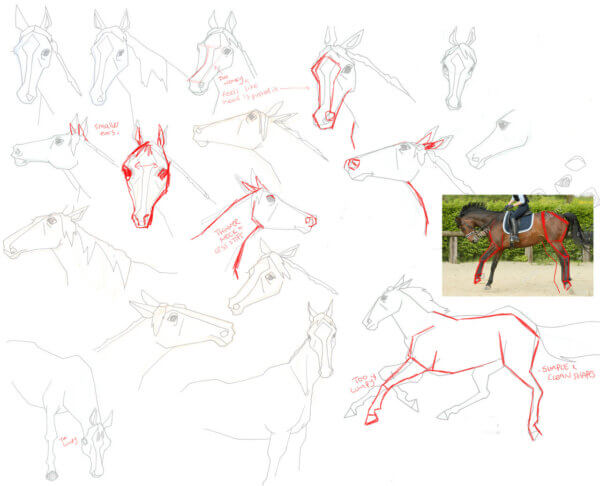
What was it like to study at The Animation Workshop?
Amazing, it’s like a home from home at this point. It’s funny, it’s an amazing school, one of the best in the world and it’s in this tiny town in Denmark. Well, technically it’s a city called Viborg, but it’s really a town. It’s really small, a crazy small incubator for animation. There’s so much stuff going on there, I had a really awesome time.
At The Animation Workshop you pitch your film and then people vote on which one they want to work on. What was it what like to direct and work with your fellow classmates?
It was great. It’s a really fun experience because we really tried to emulate what it would be like to make your own short film. I don’t think it is really like what it would be like to make your own shorts because I had ten people in total, including me in the team. It’s very like intense because it’s actually a really small amount of time to make this kind of film. But it was awesome, my team was really great. In the first few months I didn’t know how to be a director, I didn’t really know what to do, and the art director didn’t really know what an art director was, the animators are like, “Let’s see what we’re going to do with this production manager”. But towards the end, we figured out what the roles were and it just got better as it went on.
How long do you get?
Half the school year is pre-production. Then around Christmas time is when we start actual production. So, we have a couple of weeks of just doing layout and posing, then from Christmas until around May it’s straight production, and then some sound design at the end.
The style is very unique. There’s a certain geometry to all the characters and design. Can you tell me a bit about the design and what rules were put in place to keep it consistent throughout?
Yeah, it was a fun style. It was tricky because we wanted these really geometrical, rough, grungy characters that didn’t have any softness at all, which made it really hard to figure out how to do a turnaround. The animators on the film did a really good job of actually keeping the characters volumetric and I think a lot of it is actually in the shadows and tons in the film that really help because they’re quite flat characters, but when you put a shadow on them, it just totally makes you believe that their nose is actually there instead of just a shape on the face.
He’s a funny-looking character, Connor, the main character – when we started animating, after a week or two Natasha (our lead animator) tapped me on the shoulder and said “Okay, so we basically have three different Connors in the film right now. We all need to be drawing the same characters.” So, we had to go “Okay, are we picking the one from the posing or the one from the model sheet?”
It’s really tough when you have such a short time and so few people. If I’m the one doing all the posing, but someone else is doing all the model sheets, they’re going to be a little bit different. Luckily, that’s kind of the nature of how the film turned out. Lots of inconsistencies, but you don’t really notice it because it’s all pretty grungy and I kind of like that. It’s not perfect in many ways.
One of the most striking scenes in the film is the fighting scene in which it almost turns into a montage of stained-glass tableaus. Could you tell me a bit about how that came about and what the idea was for that shot?
I don’t know where it came from at first. We always knew there was going to be a fight and we really wanted that to be the tipping point. Something that’s really encouraged in our school is to try and push the style and push the design for what the story needs. I think it happens in a lot of Animation Workshop films because it’s such a good thing to practice. It’s something that maybe the viewer wouldn’t think about at all, but it’s really impactful when you watch it. It was really inspired by abstract art and Cubism because it kind of played into the style of the really geometrical characters. We’re always trying to go for contrasting things, we didn’t want to start making things very round, but pushing the geometry even further into actual shapes I thought would be really interesting.
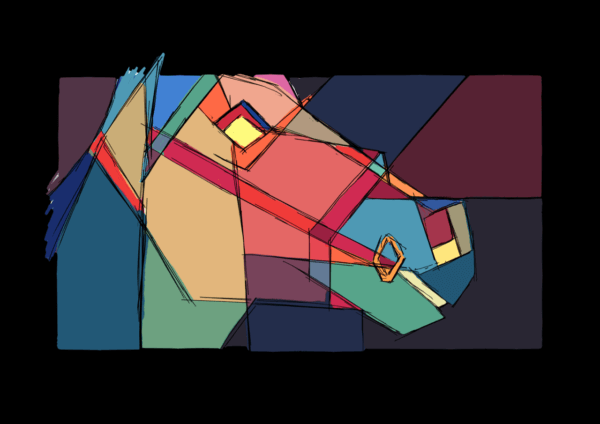
So colour obviously played a very integral part of the film by building a sense of emotion and aggression. Could you talk a little bit about this and how you constructed that throughout the film?
We made a lot of graphs in the early days to work out how rough we wanted things to get throughout the story; as things get rougher do we want the contrast to increase or make the colours more saturated? We definitely wanted the colours to get way more saturated as we go on, then towards the end of the film it gets way more desaturated, so by the end it’s like a breath of fresh air as he goes out into the field. A lot of the colours are down to a really awesome colour script that the art director Lykke Dalum made. We struggled for a while with the colours but when she made this colour script it became really clear where we had to go.
Sound and music too created a sense of time and space by placing where the film was. Could you talk a bit about the era and place you were trying to evoke in the film?
Yeah, I really like the music in the film. It was another really tough decision as to what music to use. I remember when I was pitching it, I had no idea what the music was going to be, it didn’t really matter as long as it sounded great and was catchy and upbeat. So, when we made our animatic I had a song from Hally Labs that I really liked. Eventually, I just sent them an email and we actually got to use that exact song, which is awesome because you usually never get to keep the song that you put in at first.
Then the rest of the film was composed by a friend of mine, Mads Vadsholt, and he did a really cool job, especially on the fight scene. That was a really tough one to get right. We had a lot of different versions and I think he told me that when he was making the version that’s in the film now, he was almost about to send me a message saying “I don’t know what else to do with this, I give up”. But before he hit send he was like, “Okay, I’m going to try one more thing”. Then he sent that and then I was like, “Yeah, that’s perfect” and he had a deep sigh of relief. It’s a funny mood that we’re trying to get – I don’t know how the sound works within the film because it’s electronic, it’s not really what you would imagine from this era, I don’t think. I think it works with the mishmash of feelings that the film has.
So, I saw the film a couple of weeks ago, at Annecy. It must be amazing to have had your film be part of the selection. How did you feel about finding out and also finding out that you couldn’t physically attend?
Yeah, that was awesome. It’s such an amazing place. I’ve been there just once before when I was in school and I remember sitting in the audience and cheering for the films that were before us. It’s really weird to think that our film got in. I mean, it was also devastating to know that we wouldn’t be there in person because obviously that’s where everybody likes to be at this time of the year. But I will be there next year. But it was awesome and we’re super, super thankful for the nomination.
And are you able to say where the film is going next or if anything else is happening with the film at this time?
The next festival that we’re going to is in September in Viborg, the festival that’s actually connected to our school. So, we’ll be there but other than that, we’re not sure yet. We also got shortlisted for a BAFTA which was incredible, and we didn’t expect that at all. That’s all thanks to our distribution company MIYU. So, a big shout out to them, they’re doing an awesome job and helping us get to all these cool places.
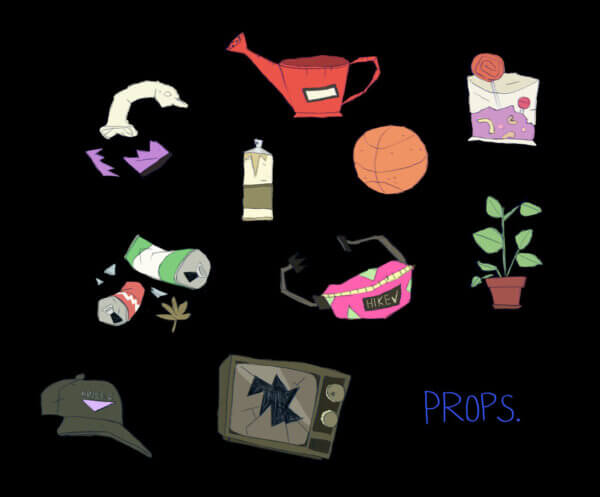
And what’s happening with you now?
My plan is to keep freelancing at the moment as an animator and I think I’ll just keep doing that until I figure out what’s going to happen and develop a new film on the side. It’s a really weird situation right now, so none of us really have a plan with all this happening. I guess I’m just going to sit tight here for a while until an opportunity comes up.
See more of Cora McKenna’s work at coramckenna.com


